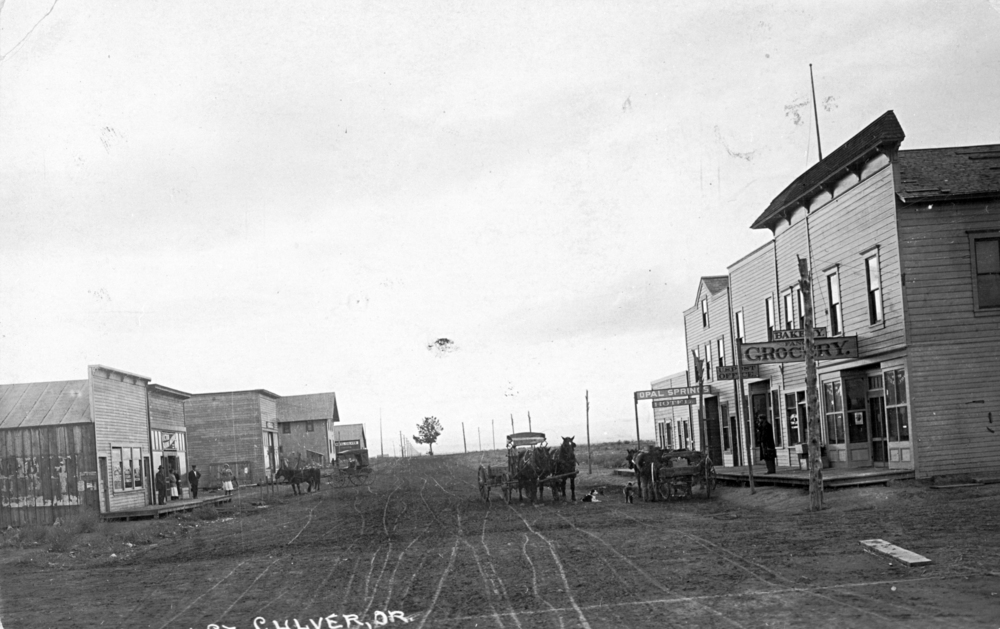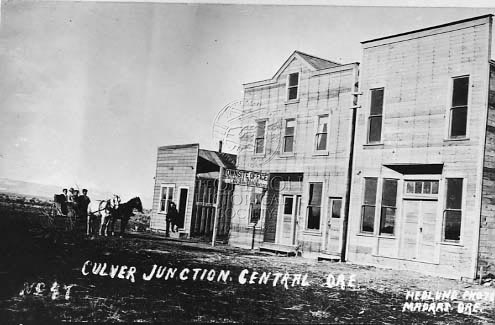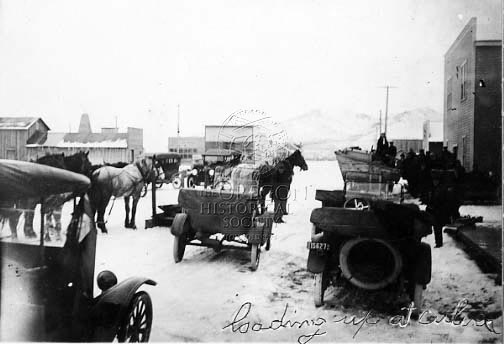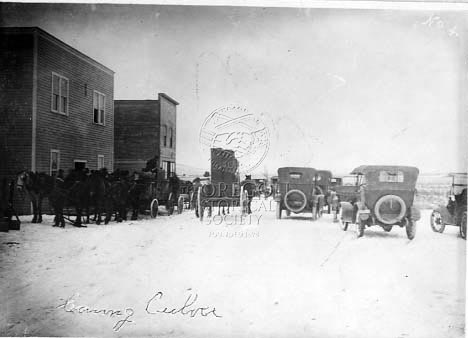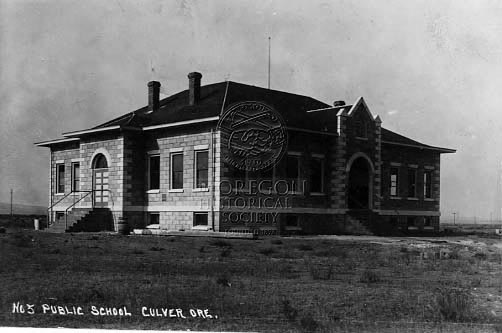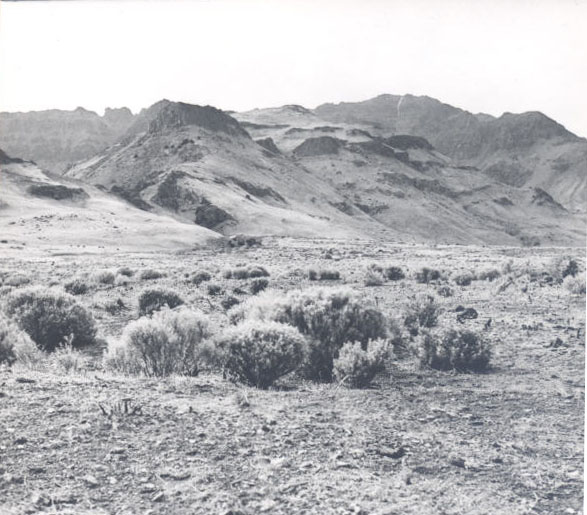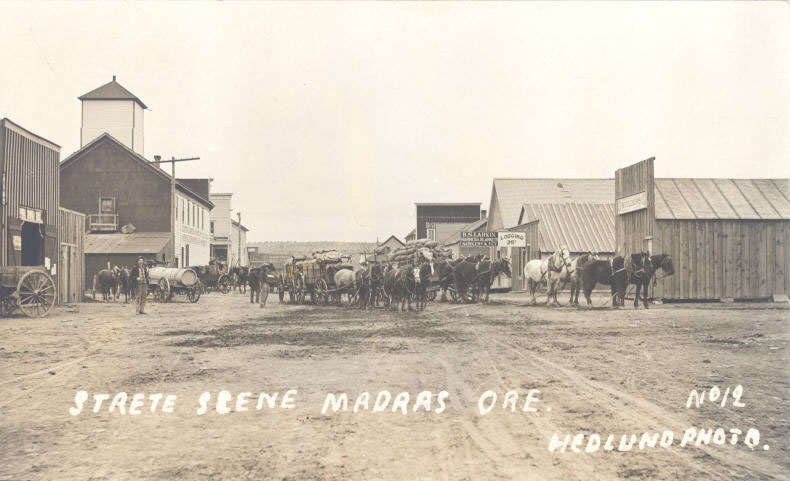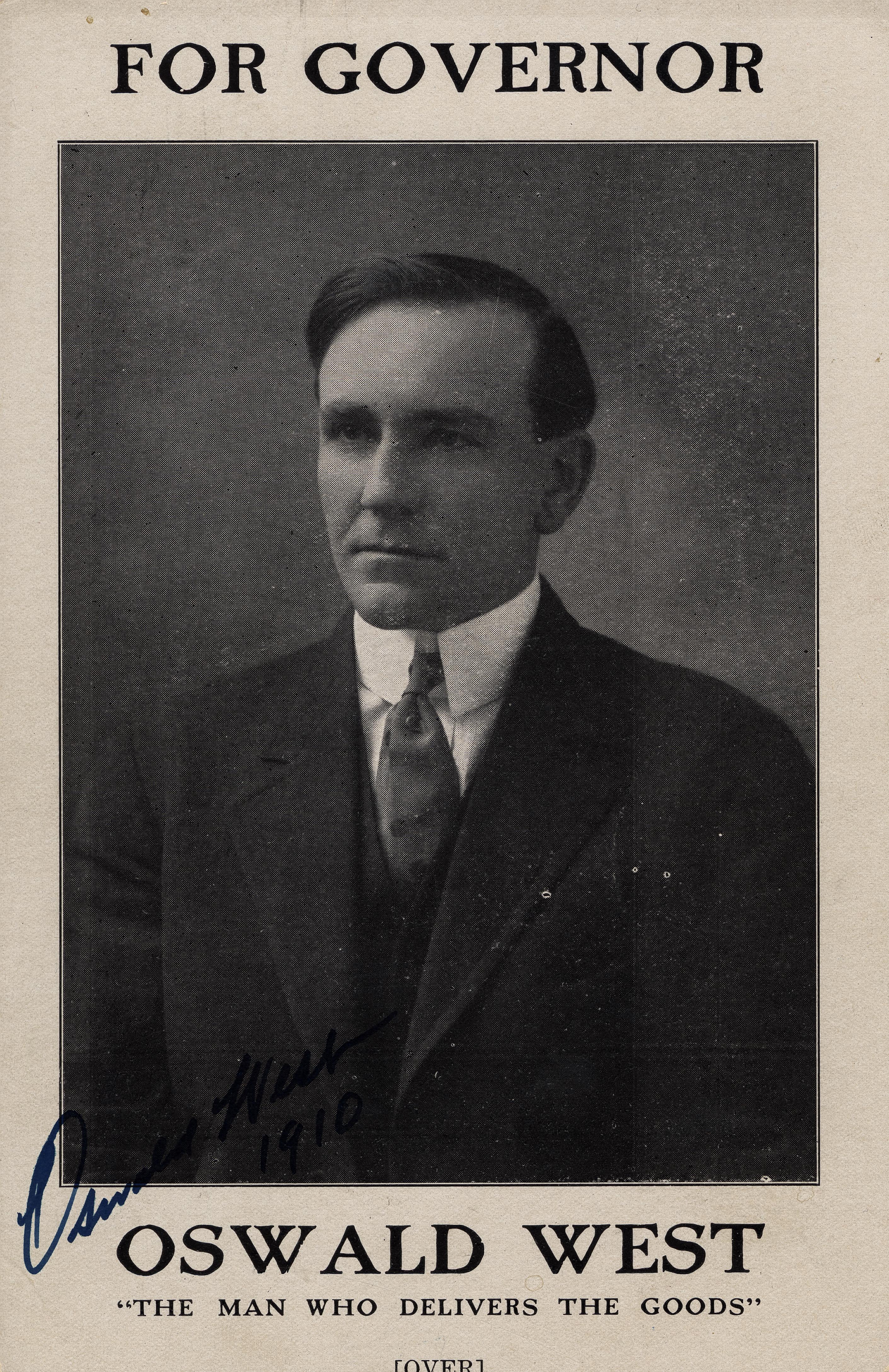The town of Culver, north of Haystack Butte in south-central Jefferson County, had its beginings as Perryville in the 1880s. It was named after Perry Read, who established a stage station on the road to Prineville. By 1900, the settlement had a store, a school, a blacksmith shop, and a hotel; and in that year O.G. Collver applied for a post-office, which was granted under the simplified name of Culver.
In about 1909, with the coming of railroad lines into central Oregon a certainty, the city fathers of Culver moved their town six miles west to Dan Swift's homestead site, north of Juniper Butte, where it would intercept the railroad. J.C. Cockerham and William C. Barber are generally reckoned as the fathers of the "new" Culver. When the first Oregon Trunk train came through on April 15, 1911, the relocated town was there to greet it.
In the 1914 state election, voters approved the creation of Jefferson County out of Crook County, and Governor Oswald West appointed three commissioners: William Boegli of Culver, John King of Metolius, and Roscoe Gard of Madras. When these worthies met early in 1915 to choose a temporary county seat, each man voted for his own town. After two days of balloting and 340 ballots, King sided with Boegli, and Culver was chosen as the site of official county business.
Madras, already a larger town, agitated to become the permanent county seat, and in the elections of 1916, voters approved the change. Culver responded with a blocking injunction, which was overruled. Wasting no time, early on January 1, 1917, an enthusiastic delegation from Madras arrived in Culver in Model T's, wagons, and buggies to carry the records and instruments of the infant county back in triumph to Madras, which has been the official county seat ever since. No blood was shed in the episode, but nearly a century later, Culver—now a thriving farming and recreational center, with a 2020 population of 1,602—still remembers what it lost to Madras on a snowy New Year's Day in 1917.
Rex Barber, son of Culver's founder W.C. "Bill" Barber, was a "flying ace" in the Army Air Corps during WWII in the South Pacific and China, and is credited with shooting down Japanese Admiral Yamamoto in 1943. The new highway bridge over the Crooked River Gorge is named "The Rex Barber War Memorial Bridge" in his honor. Culver was incorporated in 1946.
-
![Downtown Culver.]()
Culver.
Downtown Culver. Oregon Historical Society Research Library bb004369.
-
![]()
Culver Junction, Deschutes Valley Land and Investment Co..
Oregon Historical Society Research Library, -18540
-
![]()
Culver, 1917.
Oregon Historical Society Research Library, Orhi55971
-
![]()
Cars and wagons loaded with furniture leaving Culver..
Oregon Historical Society Research Library, 015858
-
![]()
Culver public school, 1914.
Oregon Historical Society Research Library, 022528
Related Entries
-
![Crooked River]()
Crooked River
The Crooked River Basin lies in the heart of central Oregon, east of th…
-
![High Desert]()
High Desert
Oregon’s High Desert is a place apart, an inescapable reality of physic…
-
![Madras]()
Madras
The Willow Creek basin that cradles Madras held four homesteads in 1902…
-
![Oswald D. West (1873-1960)]()
Oswald D. West (1873-1960)
Oswald D. West served as Oregon's fourteenth governor, between 1911 and…
Related Historical Records
Map This on the Oregon History WayFinder
The Oregon History Wayfinder is an interactive map that identifies significant places, people, and events in Oregon history.
Further Reading
History of Jefferson County, Oregon, 1914-1983. Madras: Jefferson County Historical Society, 1984.
Jefferson County Reminiscences. Portland: Binford and Mort, 1998.

